Convenient or Not, This Junk is BAD NEWS!
Weren’t we all thrilled when cooking sprays came on the food scene? Since they claimed to add no additional calories and to make cooking surfaces non-stick, it seemed like a perfectly reasonable and convenient way we could “have our cake and eat it, too.”
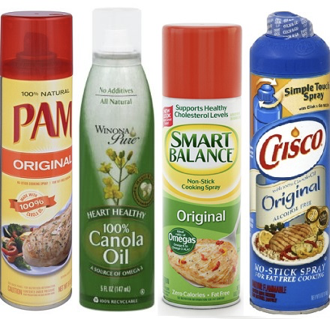
However, with the passage of enough time and enough scientific research, we now know this so-called convenience item isn’t the best item to have in the kitchen cupboard. When you read the ingredient deck on the can label, you’ll notice the long list of ingredients includes dimethylpolysiloxane, diacetyl, and propellants. Convenience or not, this junk is bad news.
Fluorocarbons: We all know how this stuff hurts the environment.
Dimemythlpolysiloxane: This is a chemical that’s a form of silicone; it helps keep the oil from foaming. It’s also used in Silly Putty®, cosmetics, and refrigerants. Somehow it just doesn’t seem wise to cook with a chemical that’s used to make refrigerators run, let alone something used in make-up and Silly Putty®.
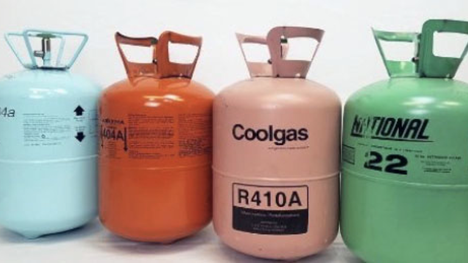
Diacetyl: We now know that exposure to diacetyl (the butter flavoring that is often added to cooking sprays) increases the risk of lung and other respiratory diseases. While many cooking spray manufacturers are no longer using this chemical, some still do, so be sure to read your product label (if you still want to use cooking sprays).
GMOs: Cooking oils such as canola (rapeseed), corn, and soy are commonly made with genetically modified organisms (GMOs), or other ingredients that have been made through genetic engineering. The whole purpose of genetic engineering is to create plants that are resistant to anything that could damage them (i.e. weather, pests, and chemicals). There’s growing evidence GMOs are not good for us, even though they’re in high use in the United States. More and more countries worldwide are banning them from their markets. Be careful about cooking with GMO anything.
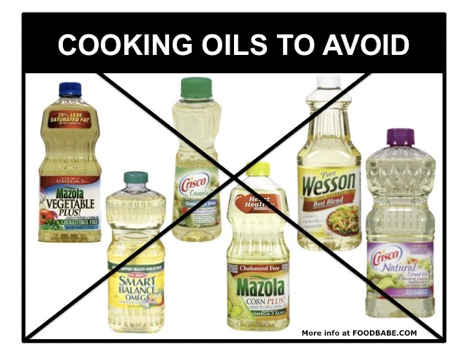
Propellants: When oil is placed in an aerosol can, there must be some sort of force to get it out of the can and into your pan. That’s where propellants come in. It’s true that most of the commonly used propellants are on the U.S. FDA “Generally Recognized As Safe” (GRAS) list and considered safe to consume. But really, are you truly OK eating butane, isobutane or propane? These are colorless and odorless compressed gases that are derived from petroleum and natural gas. I can see lighting my barbecue grill with them, but EATING them?

Even though the FDA deems cooking sprays to be safe, it just seems smarter to keep our chemical consumption at a minimum. That said, what’s the alternative? We make our own.
Oil mister spray bottles are now easy to find locally or online. You just fill it with your own oil (avocado is best for high heat) and spray away; a mister bottle is designed to add a light spray of oil to your pan. True, you’ll add a few extra calories, but you won’t be spreading fluorocarbons into the air, or eating butane, isobutene, propellant, GMOs, diacetyl, or dimemythlpolysiloxane. Smart choice, right?
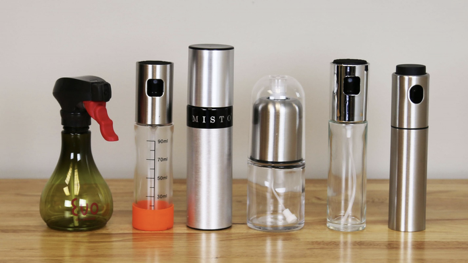
So if this idea makes sense to you, then here are the most highly recommended brands of oil mister bottles (according to www.dontwasteyourmoney.com and other non-profit reviewing organizations):
CHEFVANTAGE: It’s stainless steel, has a non-clog filter, and runs around $20 on amazon.com.
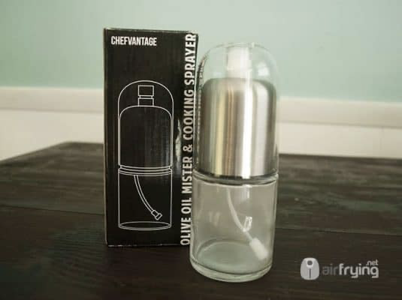
MISTO: It’s brushed aluminum, has an easy-to-use pump-style cap and goes for $7.29 on amazon (down from $14).
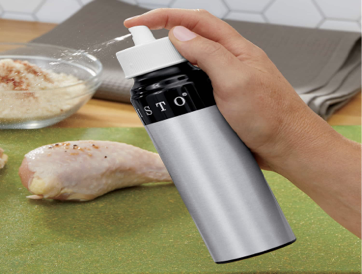
BESMON: This was the #1 pick. Made of stainless steel and glass, it costs $9.99 on amazon.com.
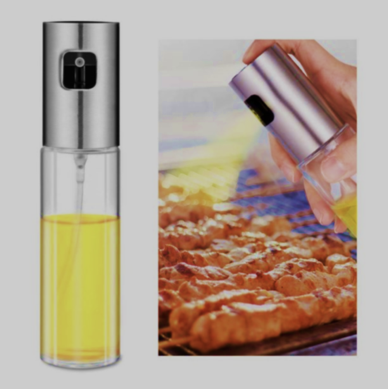
blog comments powered by Disqus

However, with the passage of enough time and enough scientific research, we now know this so-called convenience item isn’t the best item to have in the kitchen cupboard. When you read the ingredient deck on the can label, you’ll notice the long list of ingredients includes dimethylpolysiloxane, diacetyl, and propellants. Convenience or not, this junk is bad news.
Fluorocarbons: We all know how this stuff hurts the environment.
Dimemythlpolysiloxane: This is a chemical that’s a form of silicone; it helps keep the oil from foaming. It’s also used in Silly Putty®, cosmetics, and refrigerants. Somehow it just doesn’t seem wise to cook with a chemical that’s used to make refrigerators run, let alone something used in make-up and Silly Putty®.

Diacetyl: We now know that exposure to diacetyl (the butter flavoring that is often added to cooking sprays) increases the risk of lung and other respiratory diseases. While many cooking spray manufacturers are no longer using this chemical, some still do, so be sure to read your product label (if you still want to use cooking sprays).
GMOs: Cooking oils such as canola (rapeseed), corn, and soy are commonly made with genetically modified organisms (GMOs), or other ingredients that have been made through genetic engineering. The whole purpose of genetic engineering is to create plants that are resistant to anything that could damage them (i.e. weather, pests, and chemicals). There’s growing evidence GMOs are not good for us, even though they’re in high use in the United States. More and more countries worldwide are banning them from their markets. Be careful about cooking with GMO anything.

Propellants: When oil is placed in an aerosol can, there must be some sort of force to get it out of the can and into your pan. That’s where propellants come in. It’s true that most of the commonly used propellants are on the U.S. FDA “Generally Recognized As Safe” (GRAS) list and considered safe to consume. But really, are you truly OK eating butane, isobutane or propane? These are colorless and odorless compressed gases that are derived from petroleum and natural gas. I can see lighting my barbecue grill with them, but EATING them?

Even though the FDA deems cooking sprays to be safe, it just seems smarter to keep our chemical consumption at a minimum. That said, what’s the alternative? We make our own.
Oil mister spray bottles are now easy to find locally or online. You just fill it with your own oil (avocado is best for high heat) and spray away; a mister bottle is designed to add a light spray of oil to your pan. True, you’ll add a few extra calories, but you won’t be spreading fluorocarbons into the air, or eating butane, isobutene, propellant, GMOs, diacetyl, or dimemythlpolysiloxane. Smart choice, right?

So if this idea makes sense to you, then here are the most highly recommended brands of oil mister bottles (according to www.dontwasteyourmoney.com and other non-profit reviewing organizations):
CHEFVANTAGE: It’s stainless steel, has a non-clog filter, and runs around $20 on amazon.com.

MISTO: It’s brushed aluminum, has an easy-to-use pump-style cap and goes for $7.29 on amazon (down from $14).

BESMON: This was the #1 pick. Made of stainless steel and glass, it costs $9.99 on amazon.com.

Sources:
- www.bakingbites.com
- www.contractingbusiness.com
- www.foodbabe.com
- www.willysmoke.com
- www.airfrying.net
- www.seventhavenue.com
- www.walmart.com
 Alice Osborne
Alice Osborne
Weekly Newsletter Contributor since 2006
Email the author! alice@dvo.com
